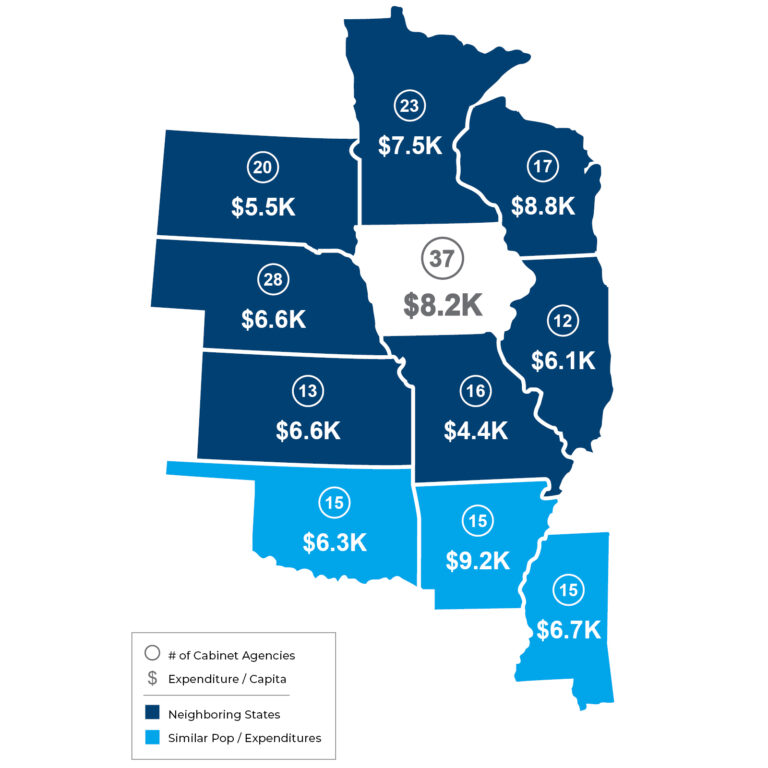This article was published in the Des Moines Register, Cedar Rapids Gazette, and the Telegraph Herald.
Iowa has 37 executive branch cabinet agencies — more than all neighboring states. The governor’s proposal is to reduce the number of executive-level agencies to 16, making government more efficient while saving taxpayer dollars.
Since assuming office, Governor Kim Reynolds has placed a priority on fiscally conservative policies, with pro-growth tax reforms and prudent budgeting as centerpieces. This legislative session, the governor is proposing to rein in Iowa’s administrative state. Forty years have passed since the last time the state government underwent any substantial reform, and Governor Reynolds has introduced a comprehensive measure to streamline and make it more efficient for taxpayers.
In her Condition of the State address, Governor Reynolds articulated her plan to ensure state government is a good “steward of Iowans’ tax dollars.” Last year, the legislature passed and the governor signed the largest tax reform measure in state history. By 2026, Iowa’s progressive income tax will be replaced by a low, 3.9 percent flat tax. The governor has also made clear her goal to eliminate the individual income tax before the end of her second term.
But lowering tax rates is just one part of good stewardship of taxpayer dollars. Governor Reynolds has also followed prudent budgeting. Limited spending is the heart of sound fiscal policy, maintaining fiscal health to ensure pro-growth tax reforms are sustainable. As part of this approach to conservative budgeting, Governor Reynolds is proposing to streamline Iowa’s executive branch.
“It’s been nearly 40 years since we’ve undertaken a comprehensive review of government operations and structure,” according to Governor Reynolds. Iowa has 37 executive branch cabinet agencies — more than all neighboring states. This includes our larger neighbors, Minnesota and Illinois. Other states with populations similar to Iowa’s have fewer executive-level agencies.

Source: Governor of Iowa Kim Reynolds: 2023 Vision of Iowa State Government Alignment
This excess is evidence Iowa not only has too much government, but also duplicates many services and agencies. “The result is unnecessary friction for Iowans, with services spread unpredictably across state government. Eleven agencies currently operate some kind of workforce program; more than 100 professional licensing functions are spread across eleven agencies. And these are just two of the most glaring examples,” stated Governor Reynolds.
The governor’s proposal is to reduce the number of executive-level agencies from 37 down to 16, making government more efficient while saving taxpayer dollars. Agencies would be consolidated, vacant positions would be eliminated, and technology would be shared to improve operations, among other reforms.
Reynolds estimates reforming Iowa’s administrative state will save taxpayers more than $214 million over the next four years. “State government can’t realize its full potential while it’s still set-up to conduct business as it did 40 years ago. We can do better for Iowans.”
Finally, Governor Reynolds suggests that making state government more efficient for taxpayers sets an example for local governments. She has demonstrated that income tax rates can be lowered, spending limited, and government made more efficient without sacrificing officials’ priorities.
Local governments should heed the call. Property taxes are a major concern for Iowans, and the source of the problem is public spending. As with the state government, locals need to seriously consider their spending and how they operate.
Families and businesses across Iowa must make decisions every day about their budgets, often including consolidation and elimination of their activities and possessions. Governor Reynolds is correct that the time has come for government to do the same.
